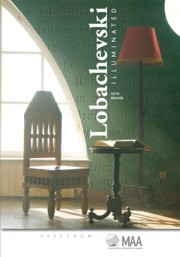Book contents
- Frontmatter
- Contents
- Introduction
- Note to the Reader
- Acknowledgements
- Theory of Parallels — Lobachevski's Introduction
- Theory of Parallels — Preliminary Theorems (1–15)
- Theory of Parallels 16: The Definition of Parallelism
- Theory of Parallels 17: Parallelism is Well-Defined
- Theory of Parallels 18: Parallelism is Symmetric
- Theory of Parallels 19: The Saccheri-Legendre Theorem
- Theory of Parallels 20: The Three Musketeers Theorem
- Theory of Parallels 21: A Little Lemma
- Theory of Parallels 22: Common Perpendiculars
- Theory of Parallels 23: The π-function
- Theory of Parallels 24: Convergence of Parallels
- Theory of Parallels 25: Parallelism is Transitive
- Theory of Parallels 26: Spherical Triangles
- Theory of Parallels 27: Solid Angles
- Theory of Parallels 28: The Prism Theorem
- Theory of Parallels 29: Circumcircles or Lack Thereof (Part I)
- Theory of Parallels 30: Circumcircles or Lack Thereof (Part II)
- Theory of Parallels 31: The Horocycle Defined
- Theory of Parallels 32: The Horocycle as a Limit-Circle
- Theory of Parallels 33: Concentric Horocycles
- Theory of Parallels 34: The Horosphere
- Theory of Parallels 35: Spherical Trigonometry
- Theory of Parallels 36: The Fundamental Formula
- Theory of Parallels 37: Plane Trigonometry
- Bibliography
- Appendix: Nicolai Ivanovich Lobachevski's Theory of Parallels
- Index
- About the Author
Theory of Parallels 27: Solid Angles
- Frontmatter
- Contents
- Introduction
- Note to the Reader
- Acknowledgements
- Theory of Parallels — Lobachevski's Introduction
- Theory of Parallels — Preliminary Theorems (1–15)
- Theory of Parallels 16: The Definition of Parallelism
- Theory of Parallels 17: Parallelism is Well-Defined
- Theory of Parallels 18: Parallelism is Symmetric
- Theory of Parallels 19: The Saccheri-Legendre Theorem
- Theory of Parallels 20: The Three Musketeers Theorem
- Theory of Parallels 21: A Little Lemma
- Theory of Parallels 22: Common Perpendiculars
- Theory of Parallels 23: The π-function
- Theory of Parallels 24: Convergence of Parallels
- Theory of Parallels 25: Parallelism is Transitive
- Theory of Parallels 26: Spherical Triangles
- Theory of Parallels 27: Solid Angles
- Theory of Parallels 28: The Prism Theorem
- Theory of Parallels 29: Circumcircles or Lack Thereof (Part I)
- Theory of Parallels 30: Circumcircles or Lack Thereof (Part II)
- Theory of Parallels 31: The Horocycle Defined
- Theory of Parallels 32: The Horocycle as a Limit-Circle
- Theory of Parallels 33: Concentric Horocycles
- Theory of Parallels 34: The Horosphere
- Theory of Parallels 35: Spherical Trigonometry
- Theory of Parallels 36: The Fundamental Formula
- Theory of Parallels 37: Plane Trigonometry
- Bibliography
- Appendix: Nicolai Ivanovich Lobachevski's Theory of Parallels
- Index
- About the Author
Summary
A trihedral angle equals half the sum of its dihedral angles minus a right angle.
Measuring Solid Angles
A solid angle is dihedral if it is bounded by two planes meeting at a line; trihedral if it is bounded by three planes at a point. Thus, a tetrahedron contains four trihedral angles, one at each vertex, and six dihedral angles, one at each edge. TP 27 relates the measure of a trihedral angle to the measures of the three dihedral angles at its edges. We know how to measure dihedral angles (see the TP 26 notes), but how does one measure a trihedral angle? We must answer this question before we can understand the statement of TP 27, much less prove it.
We tend to associate angle measurement with rotation. The measure of an ordinary angle in the plane, for example, indicates the amount of rotation required to bring one of its arms into coincidence with the other. Similarly, the measure of a dihedral angle indicates the amount of rotation required to bring one of its faces into coincidence with the other. The link between angle measure and rotation, however, ceases to exist when we work with trihedral angles (or more generally, when we work with polyhedral angles, formed by three or more planes meeting a point). Fortunately, we can articulate a general definition of polyhedral angle that agrees with our existing measures, but that is not based on rotation.
To motivate this definition, let us examine an alternate, protractor-free method for measuring ordinary angles in the plane. We begin by assigning a numerical value to the “full angle” (a 360° rotation).
- Type
- Chapter
- Information
- Lobachevski Illuminated , pp. 73 - 78Publisher: Mathematical Association of AmericaPrint publication year: 2011



